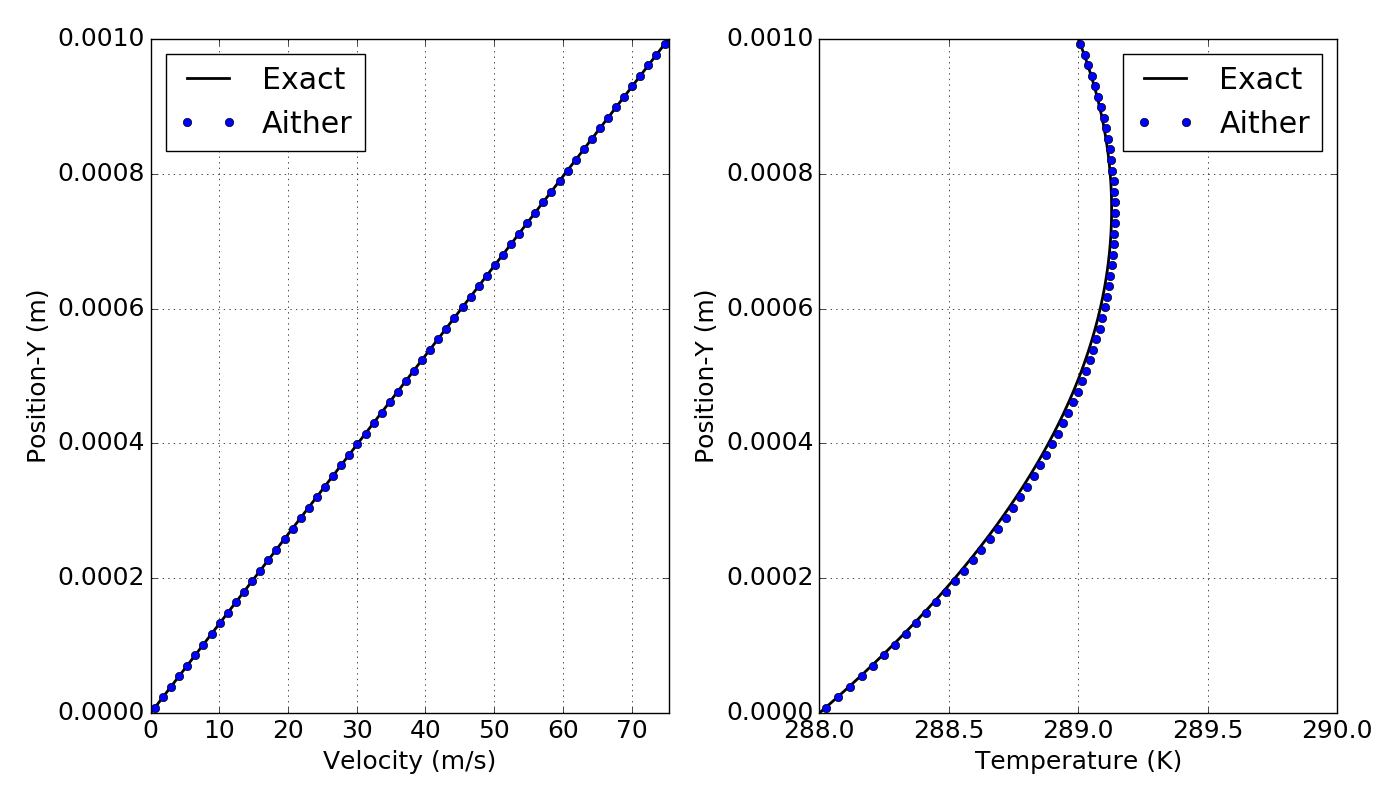Couette Flow & New Boundary Conditions
Couette Flow
Couette flow is viscous laminar flow between two parallel plates, one of which is moving relative to the other. Due to its simple nature and the existance of an analytical solution, it is a common validation case for CFD codes. An example validation case is shown in Hirsch [1]. Couette flow results in a constant shear stress which has a linear velocity profile and a parabolic temperature profile as shown below.
Three of the newer features in Aither are periodic boundary conditions, moving walls, and isothermal walls. A couette flow simulation can make use of all of these features, so it makes a great addition to the test cases suite.
Problem Setup
The parallel plates are placed a distance of 0.001 meters apart. The bottom plate is held at a temperature of 288 K and is stationary. The top plate is held at a temperature of 289 K and is moving at 75.4 m/s. For this setup, the product of the Prandtl and Eckert numbers is 4. This means that for the temperature profile, the maximum temperature will not be at the plate, but in the flow instead. The exact solution dictates that the maximum temperature should be three fourths of the way between the cold and hot plates.
The CFD domain is a rectangular prism with the top and bottom modeled as viscous walls, the sides as slip walls, and the front / back as periodic. Isothermal walls can be specified in Aither by adding the temperature parameter to the boundary state list. Similarly moving walls can be specified by adding the velocity parameter. Periodic boundary conditions are specified by indicating which boundary condition tags should be paired as periodic. This is done through the startTag and endTag parameters. For each periodic boundary condition a transformation must be done to get from one periodic face to the other. Currently a translation can be specified by adding the translation parameter which is a vector specifying how the boundary at the startTag should be translated to get to the boundary at the endTag. Alternatively a rotation can be specified by using the axis, point, and rotation parameters. The axis parameter is a vector defining the axis of rotation. The point parameter is a vector defining a point about which to rotate. The rotation parameter is a scalar defining the rotation angle in radians. An example of these new boundary condition options is shown below.
boundaryStates: <periodic(startTag=4; endTag=5; translation=[0.01, 0, 0]),
viscousWall(tag=1; temperature=288),
viscousWall(tag=2; temperature=289; velocity=[75.4, 0, 0])>
Results and Summary
The results from Aither show a linear velocity profile and a parabolic temperature profile as expected. The results agree very well with the exact solution. These results can be reproduced by running the Aither code. The grid and input file for the couette flow case can be found in the testCases directory of the repository.

References
[1] Hirsch, Charles. “Numerical Computation of Internal and External Flows”. 2nd Edition. Butterworth-Heinemann. 2006.